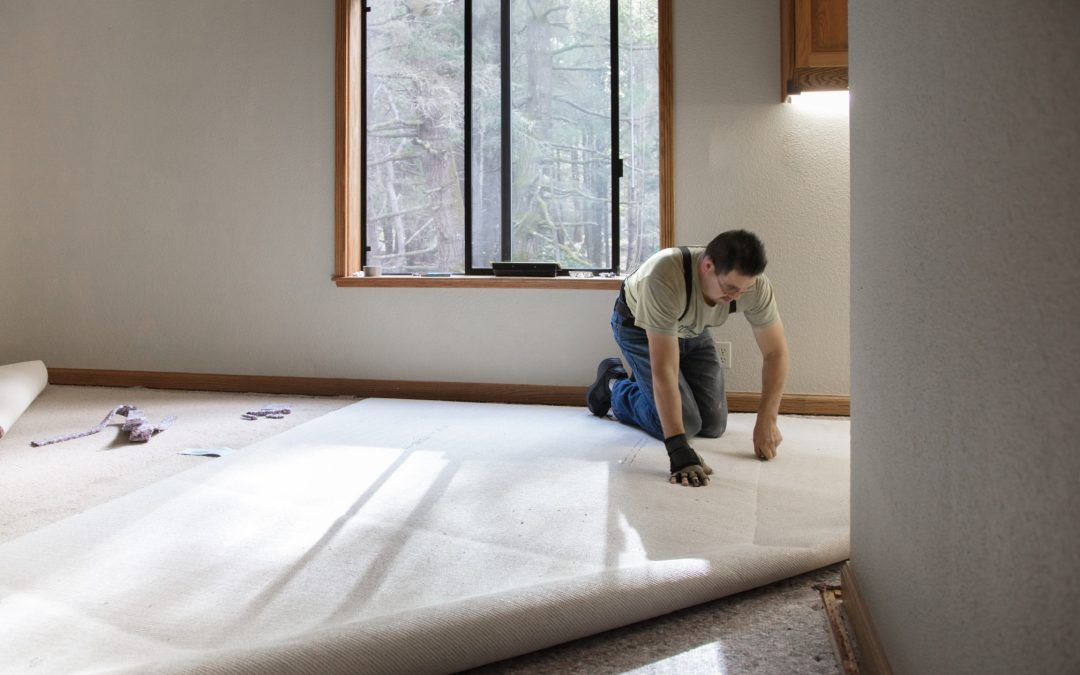When it comes to choosing the perfect carpet for your home, most people focus on the design, texture, or even color. But here’s an industry secret—a carpet is only as good as what’s underneath it. That hidden layer called carpet padding can make all the difference in comfort, durability, and even the lifespan of your carpet. This guide will help you find the best carpet padding for your needs, whether you’re upgrading your living room flooring or outfitting a high-traffic commercial space.
By the end of this post, you’ll understand the benefits of carpet padding, the different types available, and how to make an informed choice. Ready to step into comfort? Let’s get started.
What is Carpet Padding?
Carpet padding, also known as a “carpet cushion,” is the unsung hero of flooring. It’s a layer of material placed between your carpet and the subfloor to provide comfort, durability, and protection. Without this vital layer, even the most luxurious carpet will start to show wear prematurely.
Here’s why carpet padding matters:
Adds Comfort: Makes your carpet softer and more comfortable underfoot.
Extends Lifespan: Protects the carpet backing from wear and tear.
Reduces Noise: Acts as a sound barrier, keeping your home quieter.
Improves Cleaning: Allows air to circulate better, making vacuuming easier.
Did you know? A carpet pad can significantly reduce walking fatigue. It’s a game-changer for homes with hard floors underneath.
Benefits of Using the Best Carpet Padding
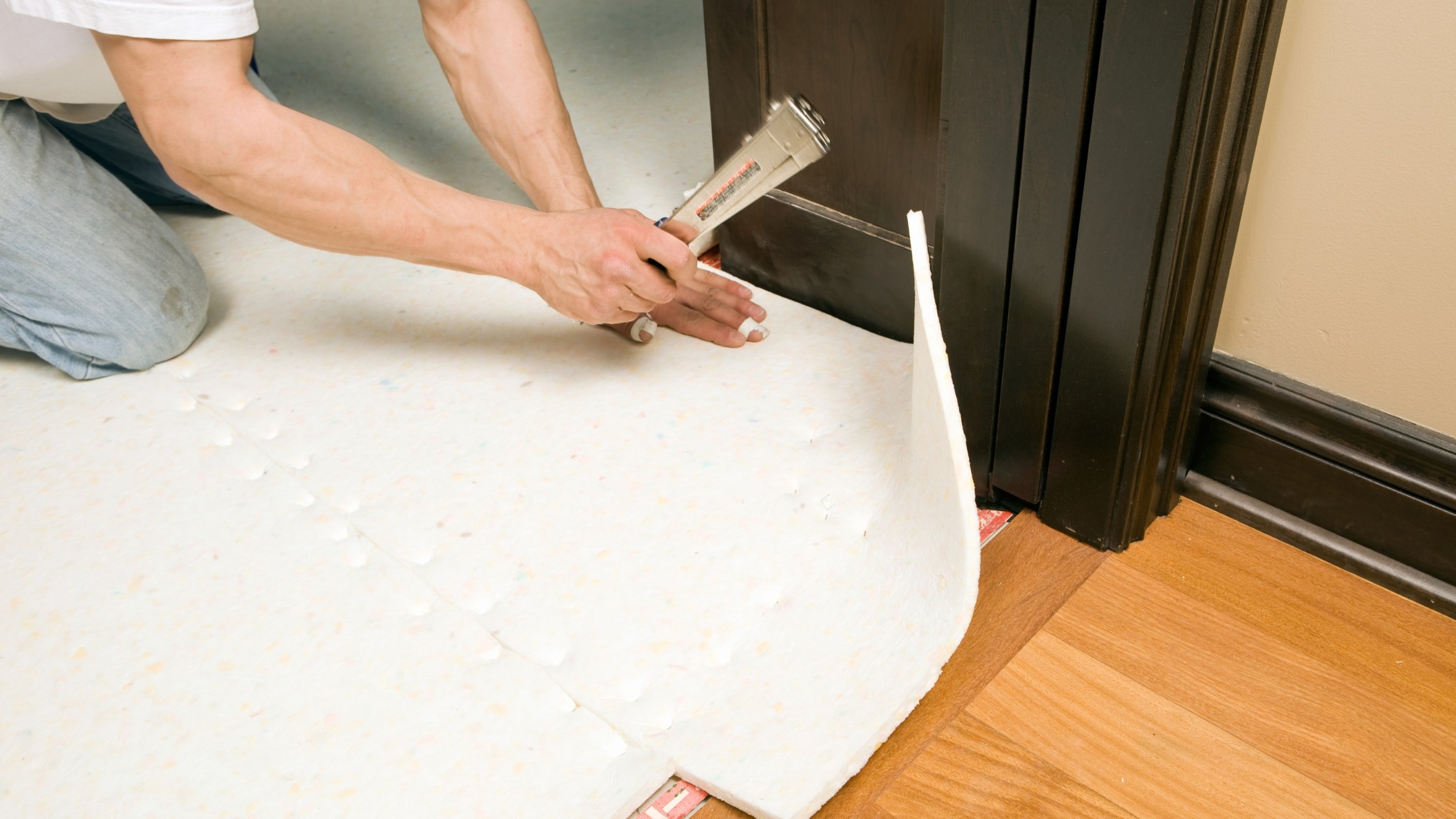
When you invest in the right carpet padding, you’re investing in more than just comfort. Here are the key benefits:
Protection Against Wear and Tear
Carpet padding absorbs the daily stress caused by foot traffic, extending the life of your carpet. This means your new carpet will look better for longer, even in high-use areas.
Enhanced Comfort
Imagine walking across a spongey, supportive surface—luxurious, right? A good carpet cushion can turn any room into a cozy retreat.
Noise Reduction
Tired of hearing echoes or heavy footsteps in your upstairs rooms? The right padding absorbs vibrations and noises, helping to create a quieter environment.
Improved Indoor Air Quality
Carpet and pad combinations can trap dust and allergens effectively. Padding that meets the Carpet and Rug Institute standards is specifically designed to improve your home’s indoor air quality.
Simplifies Cleaning
Padding enables better airflow, meaning your vacuum will be more effective at lifting dirt and debris.
Types of Carpet Pads
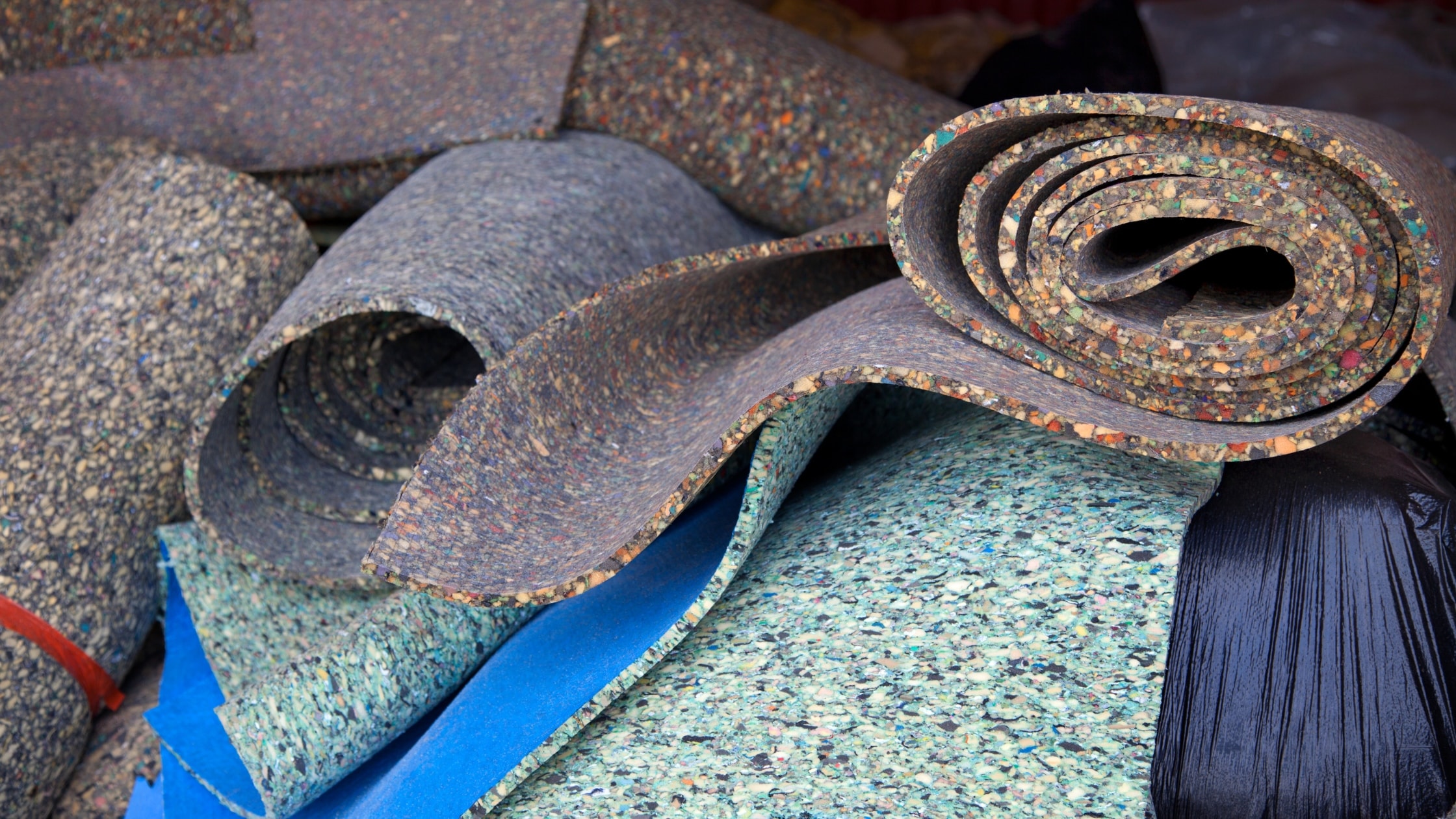
Not all carpet pads are created equal. Different materials cater to different needs. Here’s a breakdown of the most common options:
1. Bonded Foam Carpet Pads
Bonded foam carpet pads are crafted using recycled foam materials, making them an eco-friendly choice for your home. These pads strike the perfect balance between durability, comfort, and affordability, making them a popular option for families. Their sturdy construction ensures they can withstand the wear and tear of everyday life, while their cushioning provides a comfortable underfoot experience.
Bonded foam pads are especially well-suited for high-traffic areas like living rooms, as well as bedrooms where you want a mix of durability and softness. Additionally, they work well for households with kids and pets, as they can endure heavy use without losing their form.
2. Memory Foam Carpet Pads
Inspired by the comfort of memory foam mattresses, memory foam carpet pads are designed to bring unparalleled softness and support under your feet. These pads conform to the shape of your feet, giving you a luxurious, plush feel every time you step on them. They’re an excellent choice for spaces where comfort is a priority, such as bedrooms, reading nooks, or home offices.
Memory foam pads are not only about comfort—they also provide excellent shock absorption and soundproofing, making them ideal for quiet, cozy spaces. While they tend to be slightly more expensive than other options, their premium comfort and durability make them a worthwhile investment for creating a relaxing environment.
3. Synthetic Fiber Pads
Synthetic fiber carpet pads are made from durable, high-quality materials designed to stand up to heavy foot traffic. These pads are engineered to provide exceptional support, making them perfect for areas like hallways, entryways, and commercial spaces where durability is key.
One of the key benefits of synthetic fiber pads is their resilience—they maintain their structure over time and resist flattening, even in busy areas. They also offer excellent moisture resistance, which helps protect your carpet from damage. If you’re looking for a reliable, long-lasting option for high-traffic zones, synthetic fiber pads are an excellent choice.
4. Felt Pads
Felt carpet pads are highly versatile and offer unique benefits like soundproofing and temperature regulation. Made from dense fibers, felt pads absorb noise effectively, reducing the sound of footsteps and creating a quieter living space. This makes them a great option for places like dens, playrooms, or multi-level homes where noise reduction is important. Their insulating properties also help with temperature control, keeping your floors warmer in the winter and cooler in the summer.
While they’re not as soft as memory foam, felt pads provide a firm, supportive base that works well under carpets in a variety of settings. They’re also highly durable, ensuring your carpet stays in place and looks great for years to come.
Quick tip: Looking for an eco-friendly option? Choose bonded foam carpet pads, which are made from 100% recycled materials.
Factors to Consider When Choosing Carpet Padding
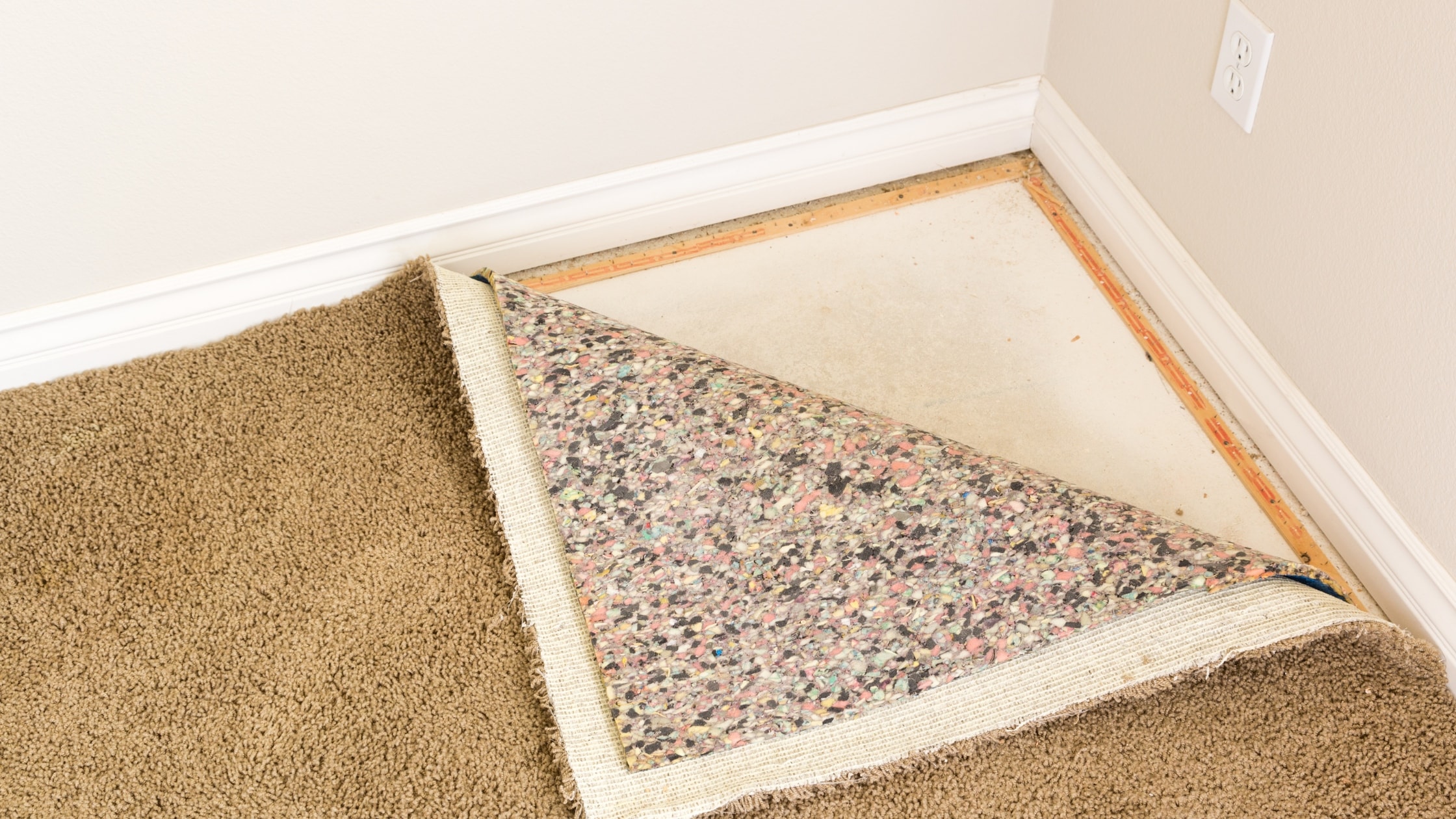
Everyone’s needs are different, but these general guidelines can help narrow down your options.
1. Match Padding to Carpet Type
Certain carpets, like berber carpet, require stiffer padding to prevent damage to their loops. On the other hand, soft pile carpets benefit from plush, thicker padding.
2. Think About Traffic Levels
For high-traffic areas, such as hallways or commercial carpet spaces, choose lower-profile, denser padding. A thicker carpet pad might feel cozy in a low-traffic room but won’t hold up to heavy use.
3. Moisture Resistance
If you’re installing carpet in a basement or another high-moisture area, look for padding with a moisture barrier that protects against mold and mildew.
4. Budget vs. Longevity
Do you plan to replace your carpet frequently, or are you in it for the long haul? A higher-quality foam carpet pad may cost more upfront but will last longer, saving you money over time.
The Right Carpet Padding for Specific Areas
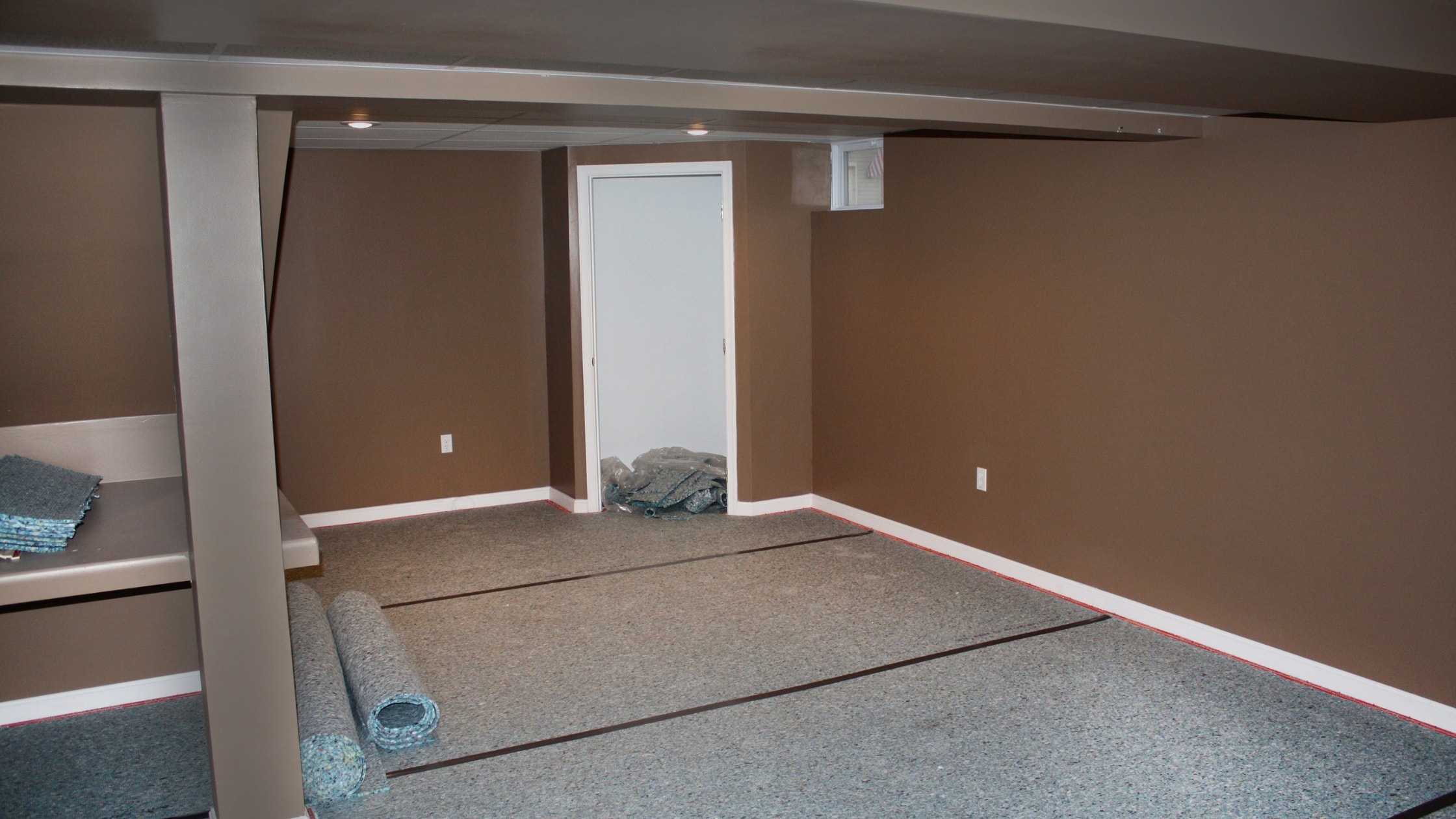
Different rooms have different needs. Here’s how to decide:
Living Rooms and Bedrooms
For areas where comfort and a cozy feel are key, such as living rooms and bedrooms, a memory foam carpet pad is an excellent choice. This type of padding provides a plush, soft surface underfoot, making these spaces feel more inviting and comfortable. Memory foam also helps reduce noise, which is ideal for creating a relaxing environment. However, it’s best suited for low-traffic areas, as the foam can compress over time with heavy use.
High-Traffic Areas (Hallways, Stairs)
For spaces like hallways and stairs that experience frequent foot traffic, durability is the priority. Opt for a thinner, denser carpet pad made from synthetic fibers or rubber. These materials are designed to handle constant stress and resist wear and tear, ensuring your carpet stays in good condition longer. Dense padding also provides better support for the carpet, reducing the risk of buckling or wrinkling over time. Additionally, thinner padding can improve safety on stairs, as it helps carpets stay securely in place.
Commercial Spaces
In commercial settings, durability and practicality are essential. Thinner, stiffer padding made from synthetic fibers or rubber is the best option for these areas. This type of padding enhances the carpet’s lifespan by providing strong support and minimizing wear in high-traffic environments such as offices, lobbies, or retail spaces. Choosing a durable pad also helps maintain a professional look for longer, as it prevents the carpet from sagging or losing its structure under heavy use.
Basements
Basements often have unique challenges, such as higher moisture levels, so selecting the right carpet padding is critical. Pads with a built-in moisture barrier are ideal for these spaces, as they help prevent mold, mildew, and water damage. This type of padding also acts as an insulator, adding warmth to a typically cooler area of the home. Moisture-resistant padding is crucial for protecting both the carpet and the underlying subfloor, ensuring a longer-lasting and healthier environment in your basement.
Quick tip: A thinner carpet pad, less than 3/8 inches, is perfect for high-use areas. It prevents your carpet from wearing out too quickly.
For More Guidance
Are you ready to choose the right carpet padding? First, make sure your room is properly measured. Learn the techniques you’ll need in our Measuring Your Space for Carpet Installation Guide.
Not sure if it’s time for a whole new carpet? Check out this helpful post on when to Replace Your Carpet.
Finally, prepare for a hassle-free upgrade with our Carpet Installation Guide.
FAQs
1. What is a carpet pad, and why is it important?
A carpet pad, also known as a carpet cushion, is the layer of material that sits between your carpet and the subfloor. It provides added comfort underfoot, increases the durability of your new carpet, and serves as insulation for sound and temperature control. Choosing the right pad enhances the longevity and performance of your carpet.
2. Is a thick carpet pad always better?
Not necessarily! While a thicker carpet pad may feel luxurious, carpet padding thickness should be chosen based on the type of carpet and its intended use. For example, commercial carpets often require thinner, firmer pads to accommodate high foot traffic, whereas residential carpets may benefit from thicker, softer pads for comfort.
3. What types of carpet pads are available?
There are several types of carpet cushions to choose from, including memory foam, prime foam, and rebond foam pads. Memory foam provides a plush feel and exceptional comfort, while prime foam offers a balance of support and softness—perfect for many residential spaces. Your choice depends on your needs, budget, and carpet type.
4. How can I ensure my new carpet performs well over time?
Selecting the right carpet pad is essential for maintaining the quality of your new carpet. For official recommendations, consider guidelines from the Carpet and Rug Institute. Proper installation, regular maintenance, and selecting the right pad will go a long way in preserving your carpet’s appearance and functionality.
5. What is the best carpet pad for commercial carpet?
For commercial carpets, durability and resilience are key. Firm, low-profile carpet pads designed specifically for high-traffic areas are ideal, as they provide the necessary support without compromising the carpet’s performance. Consult with a professional to ensure you choose the best option for your space.
Achieve Comfort, Durability, and Style
Choosing the ideal carpet pad is about more than comfort—it’s about adding value to your home. Think about your lifestyle, prioritize based on your needs, and invest in padding that will protect your carpet while making every step a joy.
Still unsure? Reach out to a flooring professional to discuss the options that fit your home and lifestyle best. With the right carpet padding in place, you can ensure your carpet looks and feels incredible for years.

